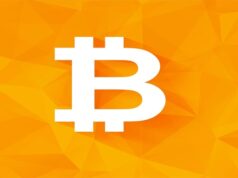
As Ethereum’s popularity grows, so does the urgent need to address its scalability problem. In this article, we delve into the solution known as rollups. Ethereum scalability is improved by rollups and also tools like ethereumcode.app are contributing to wider adoption of Ethereum.
Comparing Optimistic and ZK-Rollups
Optimistic Rollups operate on the principle of assuming that transactions are valid by default, relying on the Ethereum mainnet for security. They enable faster and cheaper transactions by batching multiple transactions into a single Rollup transaction. However, the validity of these transactions is only confirmed on the Ethereum mainnet during dispute resolution, which introduces a delay and potential challenges in cases of malicious behavior. Despite these limitations, Optimistic Rollups offer a relatively simple and flexible solution, making them suitable for a wide range of applications.
On the other hand, ZK-Rollups leverage advanced cryptographic techniques called Zero-Knowledge Proofs (ZKP) to provide scalability while maintaining strong security guarantees. ZK-Rollups bundle multiple transactions together, similar to Optimistic Rollups, but instead of relying on the Ethereum mainnet for verification, they use Zero-Knowledge Proofs to validate the correctness of the transactions within the Rollup. This approach eliminates the need for dispute resolution and offers instant transaction finality, significantly improving the user experience.
When comparing Optimistic Rollups and ZK-Rollups, it’s important to consider the trade-offs involved. Optimistic Rollups excel in terms of simplicity and compatibility, as they are compatible with existing Ethereum smart contracts without requiring significant modifications. They offer faster transaction throughput and lower costs compared to the Ethereum mainnet. However, they do introduce some centralization concerns during the dispute resolution process and may experience longer confirmation times in case of disputes.
On the other hand, ZK-Rollups provide stronger security guarantees and instant transaction finality, ensuring a high level of trust without the need for reliance on external verification. They offer better privacy and are particularly well-suited for applications that handle sensitive data or require high security standards. However, implementing ZK-Rollups requires additional complexity, both in terms of cryptographic operations and the need for trusted setup ceremonies, which may limit their adoption and accessibility.
Ultimately, the choice between Optimistic Rollups and ZK-Rollups depends on the specific requirements of the application or use case. Developers must consider factors such as desired security levels, transaction speed, compatibility with existing smart contracts, and the level of technical expertise available. Both solutions contribute to addressing Ethereum’s scalability challenges, providing options for developers and users to optimize their experience on the network.
The Roadmap for Rollups on Ethereum
One important aspect of the roadmap is the continued expansion of Optimistic Rollups. As more projects and applications adopt this scaling solution, we can expect to see increased innovation and refinement of the underlying technology. Ongoing research and development efforts focus on optimizing the dispute resolution process and reducing the time it takes to confirm transactions on the Ethereum mainnet. These improvements aim to make Optimistic Rollups even more efficient, secure, and user-friendly.
Furthermore, the roadmap highlights the advancement of ZK-Rollups and the exploration of different Zero-Knowledge Proof systems. The development of more efficient and scalable ZKP techniques holds the potential to further enhance the performance and privacy features of ZK-Rollups. Research efforts are aimed at improving the trusted setup process, reducing the costs associated with generating and verifying proofs, and exploring novel cryptographic primitives that can enhance the scalability and security of ZK-Rollups.
Additionally, the roadmap includes efforts to bridge the gap between Rollups and the Ethereum ecosystem. Interoperability solutions are being developed to enable seamless communication between Rollups and the Ethereum mainnet, fostering a cohesive and interconnected network. This integration will allow users and developers to easily move assets and data between different scaling solutions and the mainnet, further expanding the possibilities for decentralized applications and improving overall user experience.
As the roadmap progresses, challenges and considerations must be addressed. One such challenge is achieving widespread adoption and acceptance of Rollups by the Ethereum community. Education and awareness campaigns will play a crucial role in helping developers and users understand the benefits and trade-offs of using Rollups and incentivizing their adoption. Collaboration between different stakeholders, including developers, researchers, and the Ethereum Foundation, will be vital in ensuring the successful implementation and deployment of Rollups on the network.
Conclusion
Whether through the optimistic approach or the privacy-centric ZK-Rollups, these techniques offer efficient and secure scaling for the Ethereum network. As adoption increases and projects leverage Rollups, we can anticipate faster transactions, lower fees, and a more sustainable ecosystem. Embracing Rollups marks a significant step toward realizing Ethereum’s full potential in the world of decentralized finance and beyond.


































